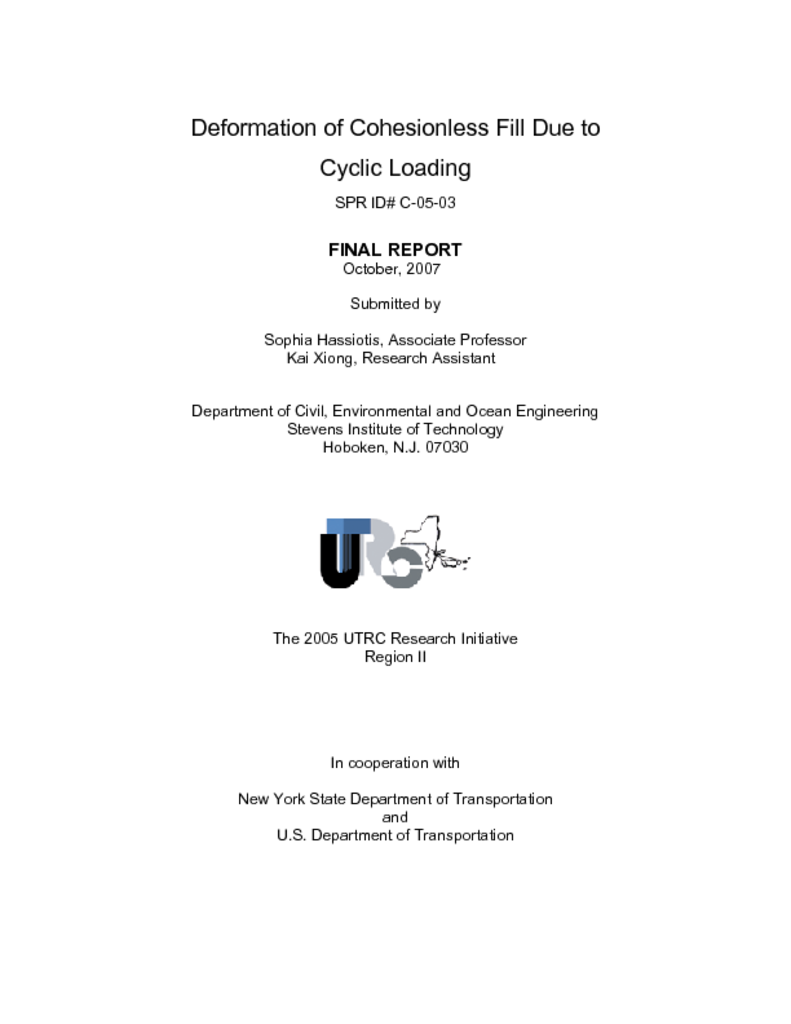Integral abutment bridges are becoming widely accepted for new construction of short to medium
length highway bridges of limited skew. Although they offer an economic alternative to the use of
bearings, integral abutments present their own unique challenges. One area of concern is the
development of passive pressures behind the abutment due to the cyclic loading of the soil during
thermal movement of the superstructure. The challenge of the present work is to present to the
engineering community the best estimate of the passive pressures behind the abutment.
To meet the challenge, we review both, the classic earth pressure theories and the more recent
displacement-dependent theories used to describe the development of passive pressures. The
information is compared to 1) the soil-pressure data obtained from the Scotch-Road Integral
Abutment Bridge that was instrumented by the Stevens Institute of Technology; 2) additional data
on two full-scale tests that were obtained from the literature; and 3) data from laboratory tests
found in literature.
Finally, we suggest two Kp factors that should be used for the calculation of passive pressures
behind a cyclically moving abutment. For relatively short bridges, the NCHRP curve for dense
sand can be used. For longer bridges that experience large enough displacements to guarantee
the applicability of the classic earth pressure theories, a Rankine pressure for dense sands was
found adequate. For either case, a linear distribution of pressure is suggested.




